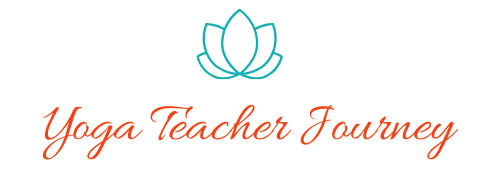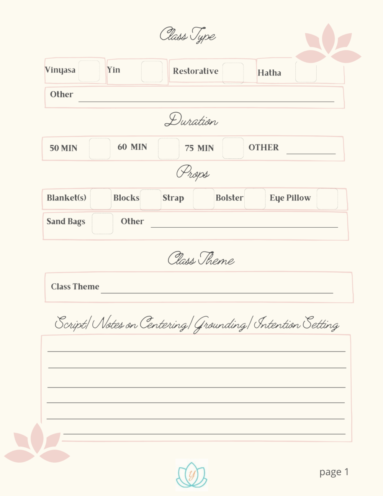As a new yoga teacher or trainee, do you give (or plan to give) hands-on adjustments in your classes? Or, are you more hands-off? Read on and you may reconsider your decision.
During my 200-hour YTT, I learned all sorts of options for giving manual adjustments and assists while teaching. In fact, one of the requirements to receive my certification was to attend a set number of classes being taught by an experienced instructor, strictly for the purpose of giving hands-on adjustments during their class. I totally stepped out of my comfort zone for that one.
I have an open mind. But some of the adjustments felt inappropriate at times. We teach students to trust their “gut feelings” and intuition – but I did not follow this rule. I admit, I succumbed to peer pressure. It was expected of me, and I followed the requirements.
Bad Rap for Yoga Teachers
It wasn’t long after receiving my certification that the disturbing Netflix documentary about Bikram Choudhury was released (2019). It revealed years of sexual misconduct towards his students – including inappropriate touching while “adjusting” students. Many individuals came forth to speak out against him. Unfortunately, he has not been the only teacher accused of fondling their students.
Years earlier, following the death of Pattabhi Jois in 2009, many of his students accused him of sexually assaulting them for years under the guise of “adjustments.” Read the Yoga Journal article here. There have been others too. The floodgates opened in 2019 and many scandals were revealed.
Read this New York Times article about an Ashville Yoga Festival teacher demonstrating the “most hands-on adjustments” the yogi/writer had ever seen!
Around this time, yoga teachers were suddenly in a position of needing to protect themselves from any possible misinterpretation of their well-meaning hands-on adjustment. Ensuring we ask for consent before giving an adjustment seemed to be the solution.
We could use poker chips (yes or no adjustments) or ask students while they were in child’s pose (to respect their privacy). But students could change their minds from one pose to another. Therefore, we learned to still ask for consent each and every time before placing our hands on a student.

A New Day
This brings me to 2020. The pandemic. Not only were we hands-off, but we were not even in the same room with students! Totally online using Zoom and Facebook, YouTube or Vimeo. We were left with no choice but to be hands-off and demo on our mats the entire class (essentially at the front of the room – gasp!) – the very thing we may have been scolded for in our teacher training.
To top it off, students had the option to turn-off their cameras so you could not even see them or their alignment. And so, we learned to cue verbally – really well! Giving options, alternatives, and demoing with props for all-levels. Giving students the responsibility of learning to feel and trust their own bodies.
Fast forward, to mid-2021 when we returned to the studio and began teaching in-person once again. Lots of students stayed online and were more comfortable that way. We needed to mostly stay on our mats to be seen by the camera. Students wore masks when they returned to in-person classes. They were clearly not comfortable with teachers coming into their space – and, that was fine because teachers were not comfortable with close contact either. Things had definitely changed.
Two plus years later, and many of us are still keeping our distance from others. We are acutely aware of the potential of getting sick. We are aware of respecting other people’s space.
Safety First
Now, the question arises, do students NEED hands-on adjustments? Are they practical – and are they safe?
During a Yoga Alliance Continuing Education Workshop. The Role of Anatomy and Biomechanics in Yoga, presenter Artura Peal, C-IAYT, states what may be obvious: “There’s such a wide variety of bodies and wide variety of range of motion…we don’t have X-ray vision, we don’t have MRI vision, we can’t feel what the student is feeling.” He continues, “…there’s so much variation in the angle of joints and the length of ligaments and joint capsules that every body is really unique and different.”
While presenter Jules Mitchell, E-RYT 500, YACEP, MS, CMT asserts, “I believe, within the scope of a yoga teacher, it’s not our job to push them into a further range.” Members of the Yoga Alliance can access the full workshop here.
Clear Concise Cueing
In my opinion, if we are cueing properly, and communicating effectively, our students will align themselves in the posture appropriately – for their body.
What do I do if I see an unsafe alignment? In addition to demonstrating the pose, I may cue repeatedly and in more than one way. If I give a cue, and still see something “potentially” unsafe, I will direct my next cue to verbally adjust that student or give options.
Only as a last resort (with consent of course), will I approach a student if they appear to be completely misaligned, uncomfortable, and unsafe.
What Others Are Saying
In her blog post Sexual Misconduct and The Emperor’s New Yoga Clothes, Kristine Kaoverii Weber of Subtle Yoga states, “I am very minimal about hands-on adjustments. I have no problem with touching people (I’ve actually been a massage therapist for years) but I think adjustments, particularly full body ones, are a loaded gun and largely unnecessary. Even reasonable, less invasive adjustments should be reserved for helping people avoid hurting themselves and only with permission – folks need to have their own experiences and learn to trust their own bodies.”
Kristin Cook, RYT 500 and Owner of Bluebird Yoga and Wellness, states, “as a trauma-informed yoga teacher, I do not offer hands on adjustments in public studio classes. Creating a safe space where students feel comfortable and don’t have to worry about being approached or touched is important to me. However, there are certain circumstances where helping a student may mean using touch— helping the seniors in my chair yoga class take off or put on their shoes is something I do regularly. Of course, other scenarios arise time to time as well. In each circumstance, it is crucial to be sure to ask permission before moving into someone’s personal space.”
You might be under the impression that learning hands-on physical adjustments is part of the Yoga Alliance RYS 200 curriculum requirements for Registered Yoga Schools. Actually, it is NOT a requirement! I recently searched the elevated standards on their website , (updated July 2023) and could find no mention of adjustments or assists. Therefore, I reached out to the Yoga Alliance and received the following response: “Hands on assists and adjustments are not part of the required core curriculum for RYS 200, however you are welcome to teach it if you would like in your training as “elective” hours.”
A big part of our training is learning alignment of poses, anatomy, and physiology. We SHOULD be looking at bodies and seeing skeletal compositions and biomechanics. We SHOULD know this information. But how we use it is another story.

Advanced Hands-On Physical Adjustment Training
What if a student asks for an adjustment? What if an advanced student asks for an assist to get deeper into a posture? Should we adjust and assist students in that situation? Should we be asking questions prior to an assist or adjustment? Like, do you have any injuries, pains, strains, or sprains? Have there been surgeries or joint replacements? Pinched nerves, herniations, bulging discs? Oh man. The list could go on!
The choice is yours (or I should say – your students). Maybe your experience is totally different. Your community may expect adjustments and assists from their yoga professionals. If this is the case, there is much more education needed in the area of anatomy and biomechanics after your initial teacher training.
Do you want to learn more about anatomy and giving hands-on adjustments? Here are a few recommended books:
Yoga Adjustments: Philosophy, Principles, and Techniques by Mark Stephens
Yoga Anatomy by Leslie Kaminoff
The Key Muscles of Yoga by Ray Long
Yoga Body: Anatomy, Kinesiology, and Anasana
In addition, Ashley Hagen, of Ashes Yoga in Poulsbo, Washington, offers 200-hour teacher trainings and provides a detailed YouTube video of how to give hands-on adjustments. You can view it here.

There is one pose I do miss assisting – and sometimes still do (with consent of course), and that is Savasana. I’ve always enjoyed helping students release any remaining tension in their final relaxation pose.
We are NOT experts in each and every aspect of our students’ bodies – or minds. A 200-hour training cannot possibly provide that kind of expertise. We should know enough to cue and demo proper alignment and the rest, is up to the individual. Students know their body best. They are the experts in their own body and should learn to trust how it feels. That is what we are teaching. Awareness of the body and union of the mind, body, and spirit. Yoga.





